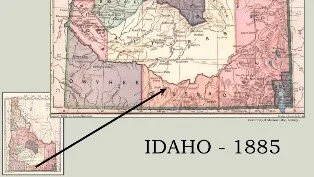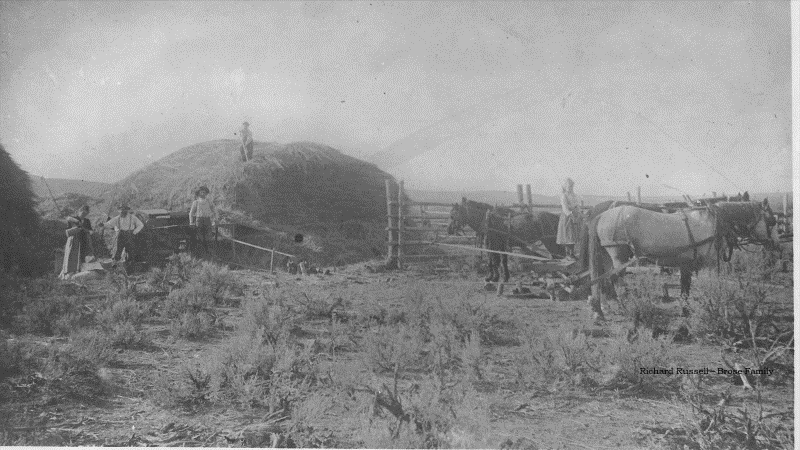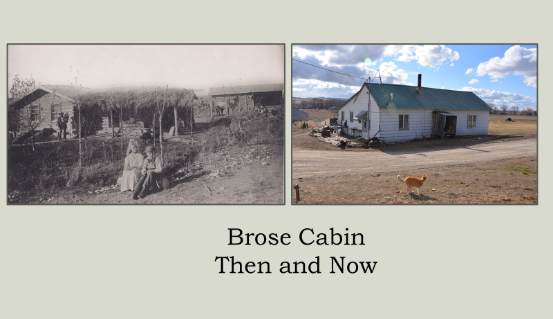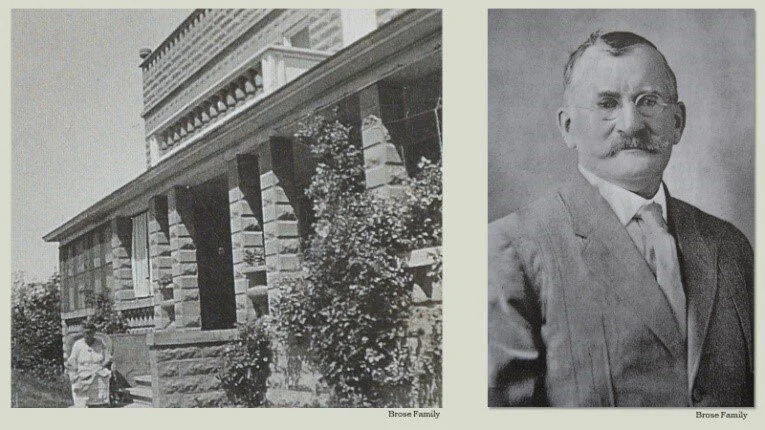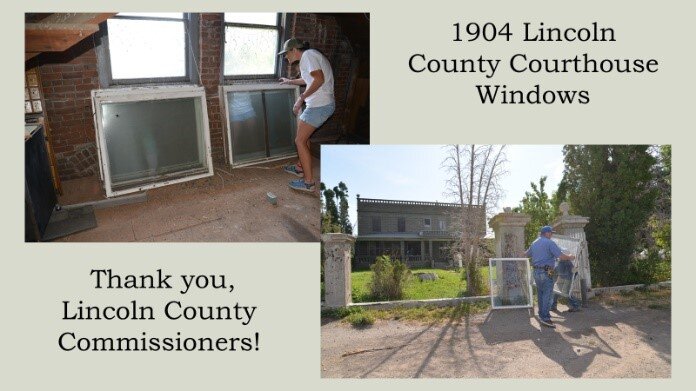Preservation Idaho Board Member Shauna Robinson has been working diligently with the owner and the Twin Falls County Historic Preservation Commission over the last year to nominate the historic Brose House for the National Register of Historic Places.
The following is a guest post written by Shauna sharing the history of the Brose brothers and this unique house.
The Brose Story
by Shauna Robinson
In September 1885, the Brose Brothers, Robert and Frank (Franz), set sail for America from Hamburg, leaving their home near Berlin in a quest to take advantage of opportunities for a better life in the “land of plenty.” With a plan to journey cross country to the West coast, they set their sights on settling in the Pacific Northwest. The prospects of having their own land and a chance to advance their lifestyle made the risk of immigration a worthwhile decision, just as their sister had done in recent years. So, as products of a culture known for its tradition, Robert and Frank boarded that ship in Hamburg ready to face the winds of adventure.
Born in Cottbus, Prussia (Germany), Robert’s life of twenty-eight years had been typical of many young Prussians. He attended public schools, served six years in the military, and received training as a baker and a butcher. In 1884, Robert married Mary Muller, but this union ended with Mary’s death after only one year. His younger brother Frank, a supportive and hard-working individual, was only seventeen years old when boarding the ship to America and made for a strong travel partner for Robert. Even though they had limited financial resources and no knowledge of English, the two brothers countered these limitations with the determination, motivation, and strong work ethic that defined them as individuals. After all, as descendants of a grandfather who survived Napoleon’s tragic march on Russia, they came by their character, discipline, and strength honestly! A new life in America was theirs to shape.
After arriving in the United States, the two men had to first travel from New York to Milwaukee, Wisconsin where their sister lived. But getting there required more money than they had available. So, they traveled in stages by train and by foot, stopping as needed to work at odd jobs to replenish their cash supply. Money was always tight and by the time Robert and Frank reached Milwaukee, Robert had only $1.75 in his pocket! Once more, finding work and delaying their westward progress was a must to rekindle the funds for the many miles ahead of them. This travel-then-work-then-travel again routine had become more the “norm” than the exception.
Colorado was the next stop, certainly south of a more direct route westward, but a stop that held opportunity for the brothers. The Broses’ followed rumors of railroad jobs in Salida, Colorado with the Denver and Rio Grande Railroad and the Midland Railroad, rumors that proved true. This more stable employment kept them busy through the winter months and into the early spring of 1886. Once the winter snows melted enough to enable travel, the brothers departed the Denver area, eager to chip away at the remaining 1,250 miles of their adventure, not by train, but by foot and by horse. Some of the money saved in Colorado allowed Robert to purchase a couple of horses for this northwesterly route of the trip. Horses would expedite their progress each day and lighten the load of supplies normally carried by the men. However, Robert never embraced riding very much, so he “walked….and walked a lot,” according to his daughter Clara in a 1980 interview with Marion Posey. The small party trekked through southern Wyoming and into northern Utah, experiencing changing landscapes, tough road conditions, and unpredictable spring weather that certainly must have added extra challenges for the men and their energy. Northwest of Salt Lake City, Utah, they connected with the Kelton Road, a major freight road leading to southern Idaho.
Their arrival in Idaho, however, proved to be pivotal for the pair when reaching Rock Creek. Their energy-sapped horses became sick, virtually bringing the journey to an abrupt halt. Frank and Robert were accustomed to frequent stops to acquire odd jobs, but after advancing this far along the cross-country route and being so close to Washington, the weary and broke travelers must have been flooded with feelings of frustration and questions about their future. Should they find work and buy a new team of horses? Would it be better to settle somewhere else? If they left Idaho after earning enough money, would they be too late to start a homestead in the Pacific Northwest? They discussed their situation to a nearby settler from Denmark, Mr. Larsen, and after hearing about the good land for crops, access to water from Rock Creek, and grazing for cattle, the Broses’ decided to make claim on 160 acres of land in Rock Creek. That sought-after property of their own was theirs for the taking! Six months and 2,400 miles after arriving in America, their new life in the West was about to take hold—thanks, in part, to sick horses and tired legs!
A flurry of activity dominated their initial months on the 160-acre homestead. Having a shelter was a necessity, and, since their finances and time were limited at this point, Robert and Frank built a simple dugout for a dwelling, in between working for local ranchers to earn money. The dugout was not ideal, but until they had the means to construct something better, it would suffice. They connected into the Rock Creek irrigation system by digging a two-and-a-half-mile long ditch by hand, utilizing water from Rock Creek for their crops. Robert even purchased one cow for his fledgling homestead! Little did he know, in years to come, he would gain a reputation as one of the area’s best ranchers, raising large herds of Shorthorn Herefords.
Within a year of settling at Rock Creek, the Brose Brothers began planning a new shelter, something roomier and above ground. They harvested trees from the forests in the nearby South Hills and constructed a three-room log cabin, using wooden pins in place of nails and planing each log to create a flat, finished appearance. Robert’s perfectionist ways were certainly evident in the craftsmanship of the cabin and were sure to please his future wife. In 1891, Robert traveled to Detroit to marry Augusta Domrose, who had immigrated to Detroit from Germany in 1882. A widow, she had two children from her first marriage, children Robert was eager to take in as his own. This three-room cabin became their home and over the years, four more children were added to the family. The cabin was adequate, but, after twenty years, Robert’s thoughts turned to designing a larger house. By then, Frank left the homestead in 1902, married, and moved to California, so this design was left completely to Robert. The cabin that Robert and Frank built remains on the property of the former Brose Ranch today, but it now has four rooms and the log walls are hidden under a cover of white siding. In its history, it served the Broses’ well, first as a home, then a storage place and finally a tenants’ and rental house.
One dugout and log cabin later, Robert began serious planning in 1904 of the new house that would accommodate his large family and welcome their ever-increasing circle of friends at the many social events they hosted. His design was simple, yet elegant, exhibiting a variety of influences: his European upbringing, trends in construction materials at the turn of the century, and construction designs in the newly founded town of Twin Falls. The styling of the Perrine Hotel in particular fascinated Robert. The walls of that modern, two story hotel utilized molded, concrete blocks, fashioned out of Portland Cement with a molding machine kept near the construction site. Robert was inspired to build his own house with this relatively inexpensive and durable construction method.
He ordered Portland Cement from Pocatello, and a machine from the Miracle Pressed Stone Company in Minneapolis, Minnesota, so he too could make blocks for his new house. Incidentally, the machine came with both illustrated and written instructions, declaring that as many as 200 blocks per day could be made “every ten hours” by “a man of ordinary intelligence and ability.” It was not as easy as it read or sounded. To prepare the cement for the blocks, Clara Brose recalls that her father had to scoop gravel from area around his ranch, clean it and pile it near the molding machine, in addition to gathering lime for the mixture from nearby ranches. A shed was set up in the field where the blocks were molded then stored while drying. Robert produced but six blocks per day, according to stories passed down by the family, but he also enlisted help from family and hired men with this ambitious undertaking, driven by Robert’s discipline and strong work ethic. He finished the landmark house in 1906, after two years of work. The house was described by an article in the August 31, 1906 edition of the Twin Falls Weekly News as “…the finest house in Cassia County, a 12-room cement block dwelling, with modern plumbing and conveniences.” Finally, on March 2, 1907, the family took up residence in their new home. The simple, rustic décor of the log cabin certainly contrasted with the unique, rich interior of wood finishes and furnishings. This landmark house symbolized the transition of the Brose homestead to the Brose Ranch, a ranch known for its high-quality grain crops, orchard, and livestock. But the work was not complete. Over the following years, Robert added landscaping, a large barn (1914), smaller outbuildings, fences, pastures and another 120 acres to his property. Even a white picket fence with tall concrete pillar supports outlined the beautiful yard around the front and side of the house. Concrete planters filled with flowers decorated the porch, adding splashes of color throughout the spring and summer seasons and providing visitors with a warm welcome to the house. Many events were held on that porch, from women’s groups to birthday parties to weddings. The Brose House became a social center for the community and exemplified the pioneer spirit of those who settled in the area.
James Hawley summed up Robert Brose perfectly in his 1920 History of Idaho stating, “He started in life in the United States in limited financial circumstances but, working his way steadily upward, is today the owner of one of the finest ranches on Rock Creek.“ Robert lived at his cherished ranch until 1949, the last fifteen years as a widower. He died at the age of 92, a successful rancher, businessman, community leader, and family man.
The Twin Falls County Historic Preservation Commission (TFCHPC) is currently in the process of nominating the Brose House for the National Register of Historic Places. The house has undergone few cosmetic changes since its construction in 1904-1906 and retains many original features, such as lighting fixtures, wood finishing, windows, and even doors and hardware. No one occupies the house now, but the current owner wants to find a use for the house and keep it from deteriorating. Retaining its historic integrity is a must with the restoration, even keeping all the antique window glass. To repair the broken window glass in the upper story, the TFCHPC acquired the 1904 windows from the Lincoln County Courthouse for replacement glass. Those windows had been in the attic of the courthouse for many years and are now at the Brose House, ready for the upcoming repairs. Incidentally, when Robert Brose picked up his order of Portland Cement from the train station in Shoshone for his house construction in 1904, he had to travel directly by the then newly constructed courthouse. I wonder if he noticed those windows?
![IMG_0282[4978].jpg](https://images.squarespace-cdn.com/content/v1/581a73bc725e2564c2e7cc41/1592252697223-1ASK5PBQDWP7J1BHRF2N/IMG_0282%5B4978%5D.jpg)

